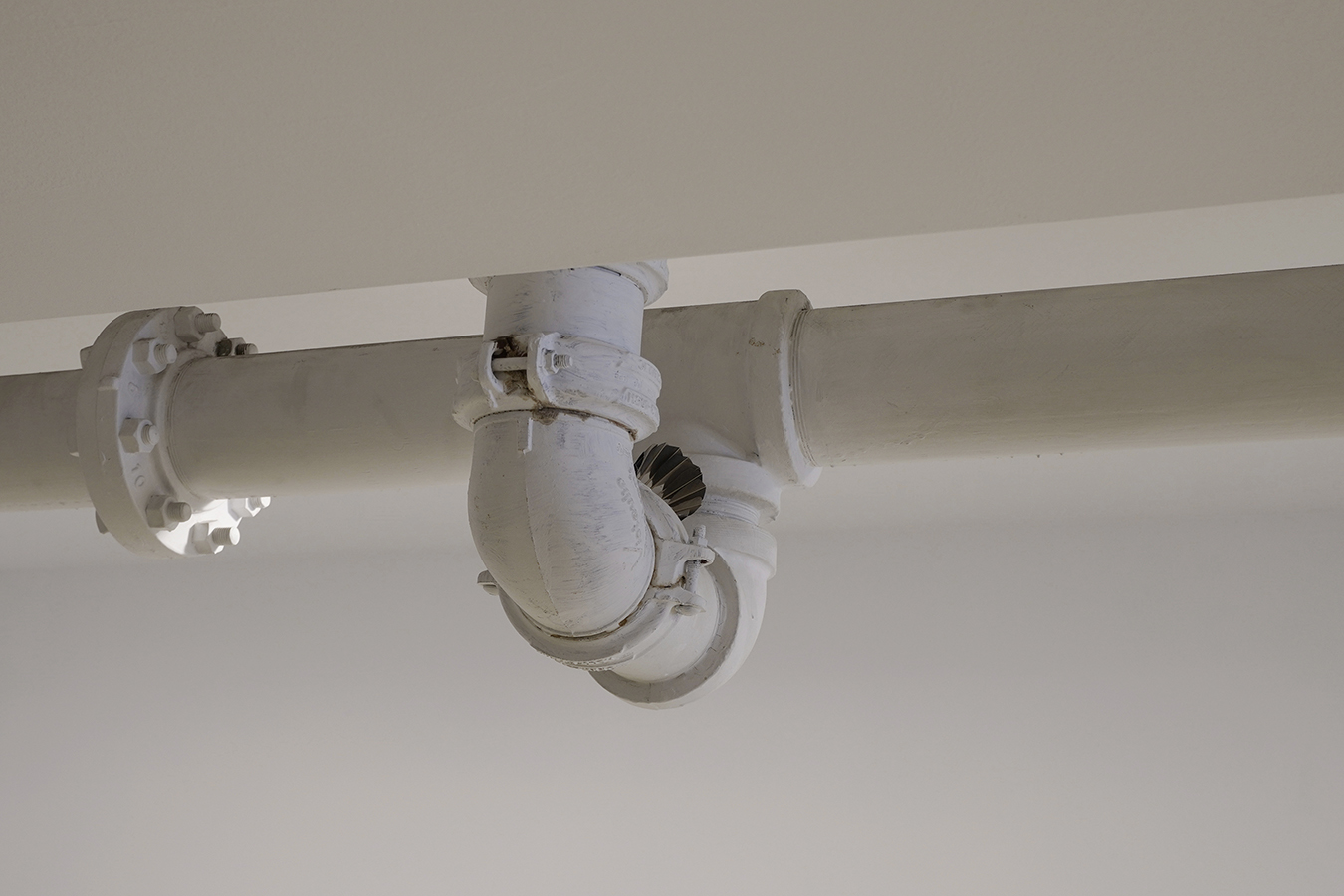Sporting codes are alluded to by their absence in the installation of Elena’s hand-crafted badminton birdies. Resting atop elevated gallery fixtures, the pieces are clearly out of court bounds, suggesting an active, if not self-oriented, departure from their native habitat. The casual suspension of their flight also enables an appreciation of the birdies’ aerodynamic form and color. Upon closer inspection, one may notice the use of uncommon feathers in the construction of the fanning skirts—evidence of the introduction of foreign species in the assembly line. White goose feathers, the preferred option for regulation shuttlecocks,3 are here replaced with the primary colors of a macaw parrot (Fig. 2), and the smoky shade of a crow’s wing (Fig. 3). Elena’s short video, spell to bind the monas (Fig. 4) presented below, provides further context for the errant birdies, playing with anatomical, aeronautical, and linguistic associations, among others. (The video includes some sexual content.)


![Fig. 4. Elena Ailes, spell to bind the monas, 2018, single channel HD video, 9 minutes. [Video linked through image.]](https://freight.cargo.site/t/original/i/8f4142654686b5279b6958c24fcadb610f5539e739d868e2b0aabb1d43606af3/planaria_01.jpg)
disconnect your head from your tail
and feed yourself your bottom half
the bottom half being the part
that is both you and outside of you
being halved
is no more a condition
than being itself is
we are still careful to touch
we are careful with touching
pregnant with itself
the larval sea urchin
(a microscopic sputnik in shape and determination)
carries a tinier more adult version of herself
an elle-même in a special pocket
counting moon cycles, measuring waves and waiting for ideal conditions
to set itself free
the human pineal gland detaches itself
from behind the eyes
makes a perfect u-turn in space
and pushes upward
that vertigo, that vertical push
an unjustifiable push towards mysticism
forces us to tear away our eyes from the horizon
and to look up
so we rise
to find ourselves in the company
of a pack of carelessly perfect spiders
perfectly careless
spinning safety sweaters for fruit flies
and taking joy rides
on a tropical storm
named Zelda
[The text, typed in white, lowercase sans serif letters, appears centered and layered over footage of: a pitch black background (00:01, 00:41, 02:37, 03:55, 04:42, 05:07, 07:46); 19 planarian flatworms4 swimming in a backlit petri dish filled with water (00:12, 01:28); a badminton birdie repeatedly hitting against the dark wall of a gymnasium littered with birdies (03:14); four birdies consecutively streaming across the view of the gymnasium ceiling trailed by lowercase white a’s strung together in animated arches (04:13); stray birdies hitting the floor, accumulating in a growing pile across a badminton court (04:46); two planarian flatworms filmed against a bright white surface entering the frame, crossing paths, and then exiting opposite ends of the frame (05:10, 05:37); a dark sculpted phallus mounted to a thin frame standing against the glare of the sun as it advances upward towards the edge of the earth’s atmosphere (06:02); and stray birdies littered in a pile bouncing off the court floor and out of the frame in reverse motion (07:51).]
3. USBA, “Glossary of Badminton Terms.” The Washington Post, www.washingtonpost.com/wp-srv/sports/olympics/longterm/badmnton/badgloss.htm. Accessed 31 March 2021.
4. Planarian flatworms were used in experiments between the 1950s and 1970s that tested the idea that memories can be transferred between animals through chemicals. (Collins, Harry and Trevor Pinch, “Edible knowledge: the chemical transfer of memory.” The Golem: what everyone should know about science, Cambridge University Press, 1993, pp. 5–14/25.)
4. Planarian flatworms were used in experiments between the 1950s and 1970s that tested the idea that memories can be transferred between animals through chemicals. (Collins, Harry and Trevor Pinch, “Edible knowledge: the chemical transfer of memory.” The Golem: what everyone should know about science, Cambridge University Press, 1993, pp. 5–14/25.)
Elena Ailes currently lives and works in Chicago, USA. www.elenaailes.com
Artwork courtesy of the artist.
Artwork courtesy of the artist.